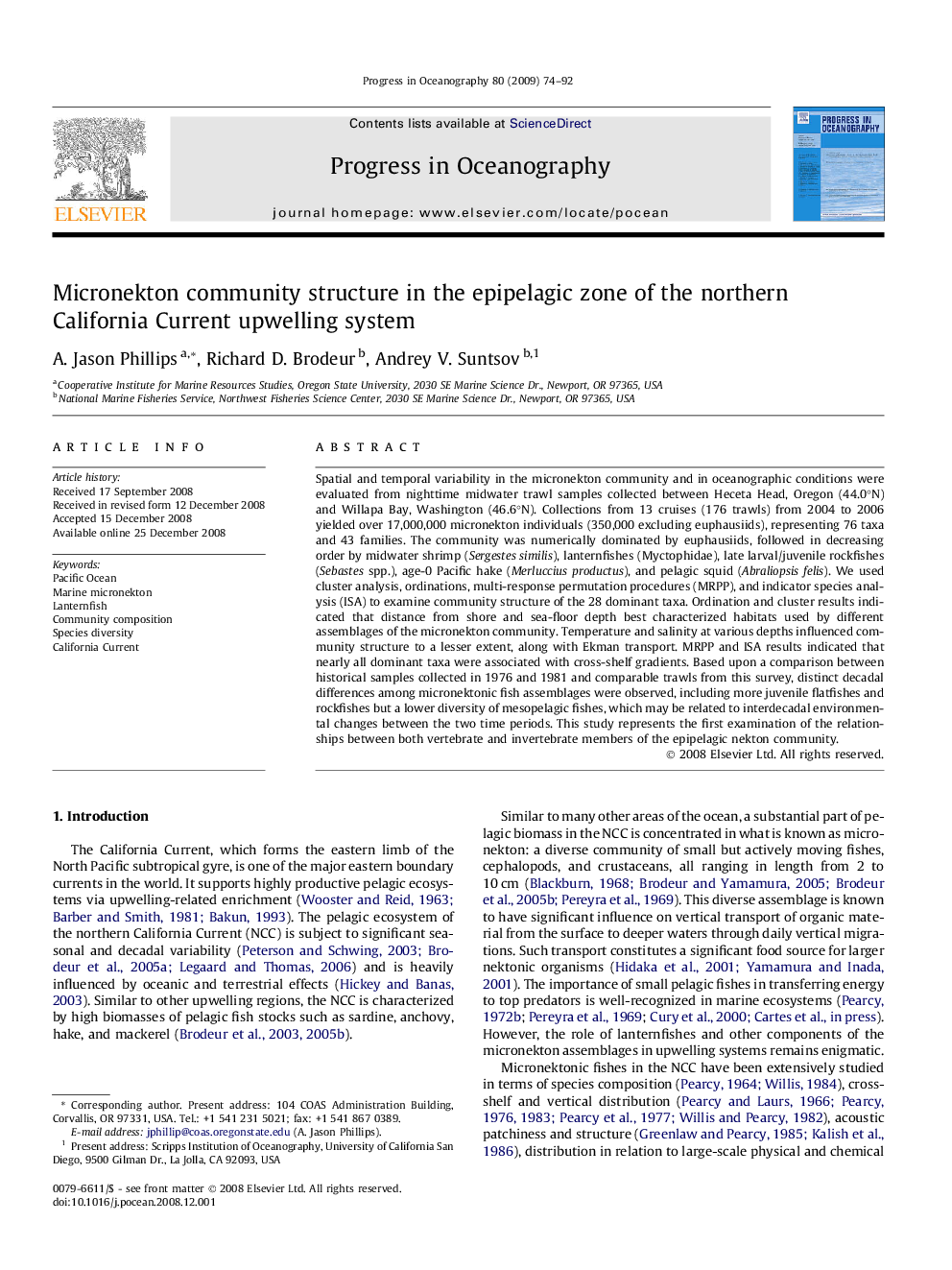| Article ID | Journal | Published Year | Pages | File Type |
|---|---|---|---|---|
| 4553663 | Progress in Oceanography | 2009 | 19 Pages |
Spatial and temporal variability in the micronekton community and in oceanographic conditions were evaluated from nighttime midwater trawl samples collected between Heceta Head, Oregon (44.0°N) and Willapa Bay, Washington (46.6°N). Collections from 13 cruises (176 trawls) from 2004 to 2006 yielded over 17,000,000 micronekton individuals (350,000 excluding euphausiids), representing 76 taxa and 43 families. The community was numerically dominated by euphausiids, followed in decreasing order by midwater shrimp (Sergestes similis), lanternfishes (Myctophidae), late larval/juvenile rockfishes (Sebastes spp.), age-0 Pacific hake (Merluccius productus), and pelagic squid (Abraliopsis felis). We used cluster analysis, ordinations, multi-response permutation procedures (MRPP), and indicator species analysis (ISA) to examine community structure of the 28 dominant taxa. Ordination and cluster results indicated that distance from shore and sea-floor depth best characterized habitats used by different assemblages of the micronekton community. Temperature and salinity at various depths influenced community structure to a lesser extent, along with Ekman transport. MRPP and ISA results indicated that nearly all dominant taxa were associated with cross-shelf gradients. Based upon a comparison between historical samples collected in 1976 and 1981 and comparable trawls from this survey, distinct decadal differences among micronektonic fish assemblages were observed, including more juvenile flatfishes and rockfishes but a lower diversity of mesopelagic fishes, which may be related to interdecadal environmental changes between the two time periods. This study represents the first examination of the relationships between both vertebrate and invertebrate members of the epipelagic nekton community.
